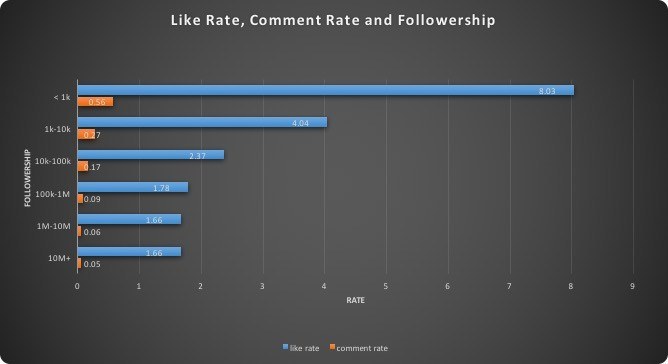
By Brooke B. Sellas, {grow} Contributing Columnist
When I was a teenager, I was preoccupied with figuring out ways to sneak out of the house or get my parents to let me borrow the car for the night (neither went well). But today, teenagers seem to be more focused on their hustle and creating content that will gain them thousands of followers on YouTube or Instagram — and deposit big money in their pockets.
The average celebrity influencer, for instance, makes $75,000 for an Instagram post and $35,000 per paid tweet!
But I’m not here to stir the giant pot of influence Kool-Aid. Influence marketing is here, it’s important, and you need to consider how it might fit for you. The purpose of this post is to say … be careful before jumping in feet first.
What Is Influencer Marketing, and Why Should I Care?
Just in case you’ve been living in a hole, here’s how Simply Measured defines influencer marketing and why it’s the new shiny marketing toy.
“Influencer Marketing is a subset of digital marketing in which a brand partners with a popular social and web personality to expand the brand’s reach and credibility with a targeted audience. The partnership between the brand and the influencer may include monetary compensation. Alternatively, compensation may take the form of free product or the cache of being associated with a major brand.”
Marketers love influence marketing because:
- Twitter users now trust influencers as much as they trust their friends.
- It’s more effective than advertising since 47% of online customers use ad block technology.
- 73% of Millennials see it as their responsibility to guide friends, peers, and family toward smart purchase decisions. [source]
- Influencer marketing content delivers 11X higher ROI than traditional forms of digital marketing. [source]
So, while the stats support launching your own influencer marketing campaign, there are a three stop lights you should heed first:
1. Lack of Measurement
Just because Kim Kardashian has millions of Instagram followers doesn’t mean she’s going to sell your product. You need to pick influencers who are tied to what you do, and you need to measure the results they’re able to produce.
Be prudent. be cautious. Be bold and ask potential influencers to share metrics with you on 1) monthly impressions, 2) monthly impressions per follower, 3) monthly engagements per followers, 4) monthly clicks (and how many of those clicks converted?).
Unfortunately, probably the most reliable measure we have today is the old standby “impressions.” It’s back to the future of the old advertising days I suppose.

Christopher S. Penn offers sound advice for influence marketing measurement in this post. Be aware that this area is shifting and developing quickly and that all social media platforms are working on improvements to their dashboards and metrics.
Anybody developing an influence marketing program needs to come to grips with the limitations of measurement.
2. Snubbing FTC requirements
The Federal Trade Commission guidelines require any sponsored post to be tagged as an ad. I’m not a lawyer — I don’t even play one on TV — so you should brush up on the FTC guidelines. Start with this savvy post here on {grow} by Kerry Gorgone — a whip-smart lawyer who is also into marketing.
We have recently seen the FTC make a statement by cracking down on brands and individuals who don’t reveal their commercial association with a company. The brand might be sued, the ad agency might be sued and certainly the individual influencer may pay a price for non-disclosure.
If you proceed on an influence marketing effort, make sure you are adhering to the regulations!
3. Ignoring advocates
Most people put influencers into one bucket when in fact there are three different types, and three different strategies.
The first is celebrity influencers. Aligning your brand with somebody famous has been around since the early 1900s.
The second type is a self-made influencer, somebody who becomes known through their content. An example would be a tech influencer or a YouTube star.
The third type os often ignored and that is the true advocate. These are the people who truly love you and can’t enough of your product. They can effectively drive sales because of the loyalty of their community and their authentic, passionate advocacy.
Unless you have an unlimited budget, you may not be able to afford an actual celebrity of even a self-made influencer for your marketing campaign. Consider linking up with an advocate (or micro-influencer). In some cases, they may be providing the maximum impact!

Should You Consider Influencer Marketing?
If senior management is on board and your marketing budget has room to pay for a few influential posts, why not? As we move toward an ad-free world this may be an important strategy.
But watch out for the three snags above. Like any marketing initiative, an influencer marketing campaign is best served when it has a solid plan in place.
Has influencer marketing been a bumpy road or smooth sailing for you? We’d love to hear about your experiences in the comments section below!
 Brooke B. Sellas is an in-the-trenches digital marketer & owner at B Squared Media, blossoming blogger, and a purveyor of psychographics. Her mantra is “Think Conversation, Not Campaign” so be sure to give her a shout on Twitter.
Brooke B. Sellas is an in-the-trenches digital marketer & owner at B Squared Media, blossoming blogger, and a purveyor of psychographics. Her mantra is “Think Conversation, Not Campaign” so be sure to give her a shout on Twitter.


